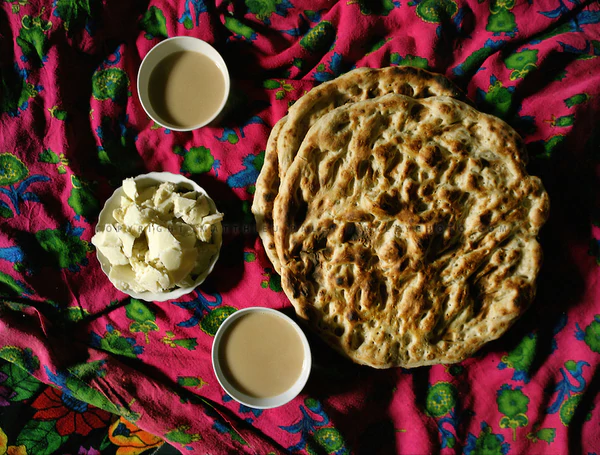A tea-break allows a few minutes of respite at any time during the day. It is a moment to place a hault on the demands of a whirlwind day in our highly accelerated modern society. It enables us to take a break from emails, BBMs, phone calls, pings, tweets, status updates and simply revel in the luxuriating warmth of the soothing beverage.
In America, there is the regimented 9 to 5 corporate environment, where the mantra is maximum productivity. Tea-breaks are not widely taken or encouraged. However, in other parts of the world, it is the norm. During a typical work day, people routinely take tea-breaks for a boost of rejuvenation and socialization.
In most parts of the world, tea is a connecting elixir, where even for a few moments you can get together not just with friends, but even with complete strangers, stand around a street tea stall and exchange the latest political sexl scandal, weather fluctuations or heavier subjects such as the fastest bowler on a cricket team.
Friendly invitations are usually cloaked in terms of tea invites, a common one being, “Please visit and have a cup of tea with us.”
The origin of tea spans thousands of years and cultures. Its origin is traced to China and started off as a medicinal elixir. It traveled through continents and cultures; went through compositional changes such as addition of sugar, milk, butter, herbs, flavors, powders and a plethora of condiments. However, the essence of tea stays static; it continues to unite and is internally and externally palliative.
The following are a few examples of teas around the world that I love. You will note that tea is brewed in diverse ways across the globe, with varying additives; yet the essence of it is constant. It soothes and fuses humans.
Qymak Tea from Afghanistan
Kaymak is clotted cream made from milk of water buffaloes or cows. It is used in Turkey, Balkan countries, Iran, Middle East and Afghanistan amongst other countries.
In Afghanistan, Qymak tea is made on special occasions. Green tea is brewed and a dollop of the scrumptious Qymak is added to the top that gives the tea the rich, creamy texture. Eat with a sweet Gosh Feel (elephant ear pastry) or Naan (flat bread), and you are in Jannat (paradise!)
Mint Tea from Morocco
If you go to Morocco, mint tea is a way of life. It is at every street corner, every luxurious upcoming Mall, every souk, every bazaar. The bunches of fresh mint in the beautiful filigreed silver tea-pots are beyond aromatic. However, the fun part is the pouring of the tea. The higher the stream, the more ambrosial the flavors. Caveat: You need skilled hands for the tea pouring to avoid 2nd degree burns!
Cutting Chai from Bombay
The name of this tea is deep-rooted in pop-culture lexicon. Its origin is most likely in Bombay, India. It is a concoction of black tea-leaves boiled in a big metal kettle with milk, fresh ginger, masala and sugar. The tea is boiled to a point where the flavors are pungent. The flavor is so strong that it is served by the half glass, hence the term “cutting.” “Chai” is tea. So, a literal translation, is “half tea.”
Earlier, it was the “go-to” beverage for the blue-collar workers, such as in the construction workers. Nowadays, it is a trendy treat for the 20-something, ultra- westernized crowd, trying to connect to their Indian roots! It is delicious, especially when eaten with bun maska (hot, buttered fluffy bun).
Gur-Gur Tea (Butter Tea) from Tibet
Consumed in Tibet and regions of Ladakh, India, it is drunk not by the cupfuls, but bowlfuls. It is made through a complex procedure of boiling and pouring in cylinders, thereafter adding fresh yak butter and a pinch of salt.
It is interesting to note, that tea originated as a medicinal elixir and continues to serve the same purpose. The dollop of butter in Gur-Gur tea is not only lip-smacking, but helps prevent chapped skin in the sub-zero temperatures of these high Himalayan regions.
Turkish Tea from Turkey
If you go to Istanbul, the streets are littered with cafes where young and old, surprisingly mostly men, sit and discuss the dire conditions in Syria over hot cups of Turkish tea called çay. (Pronounced as chai.) It is a pure form of tea, drunk black, with or without sugar depending on your disposition for sweet. It is boiled in two stacked kettles called çaydanlik. Turks are known to drink up to 50 cups a day. Uniting, right?
Milk Tea from Hong Kong
Milk tea is a remnant of the colonial British impact on Hong Kong. It is also known as the “Silk Stocking Tea” as sieved though a long stocking to intensify the flavors. A black tea mixed with evaporated milk and my very favorite, condensed milk for the thick, luxuriant consistency. You may want to ask for less condensed milk as at times can be undrinkably saccharine.
So, drink up, heal and connect.


